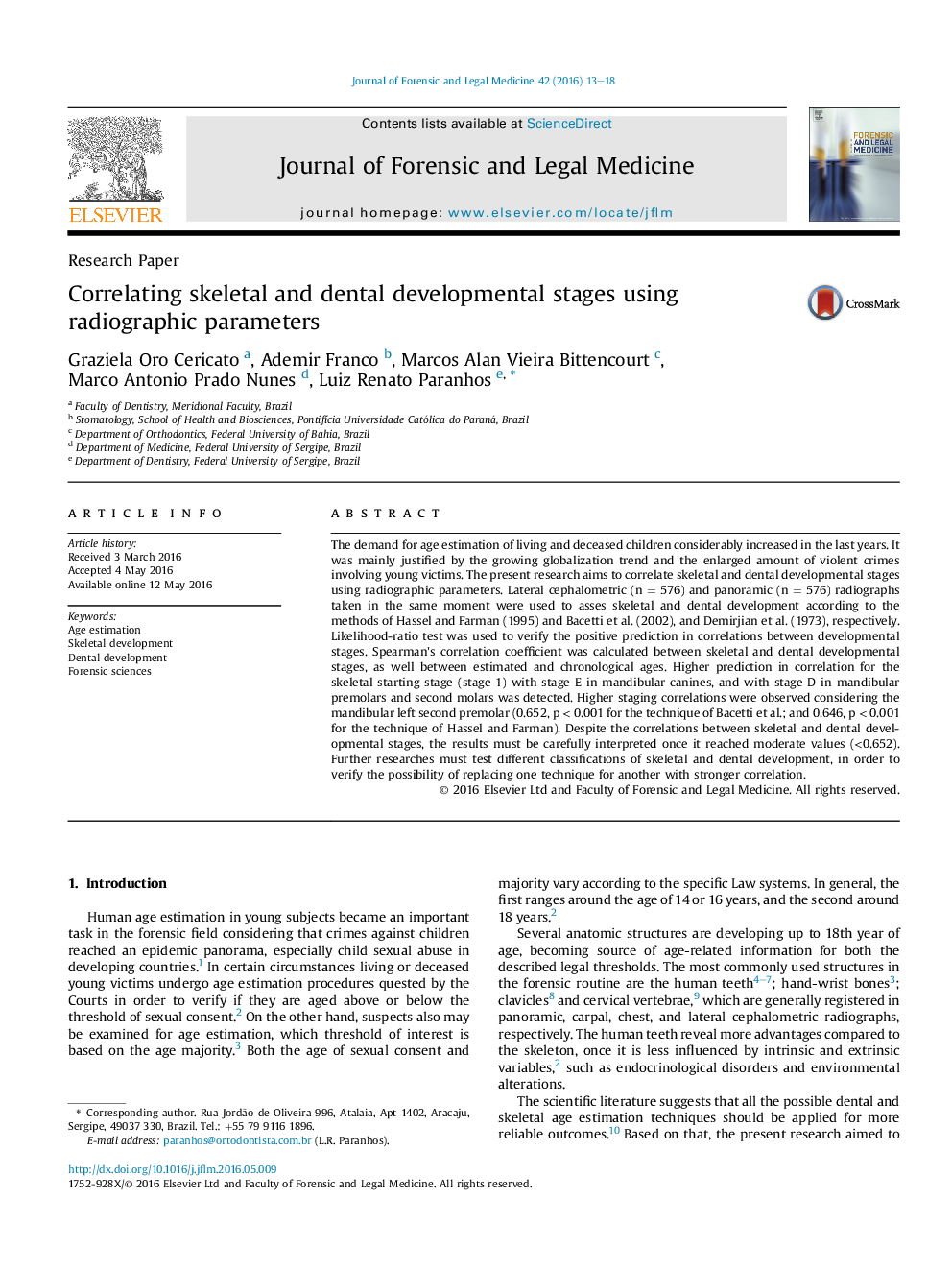| کد مقاله | کد نشریه | سال انتشار | مقاله انگلیسی | نسخه تمام متن |
|---|---|---|---|---|
| 101600 | 161284 | 2016 | 6 صفحه PDF | دانلود رایگان |
• Increase in migration of unaccompanied minors results from globalization.
• Violence against children reaches an epidemic scenario.
• Age estimation of children becomes more necessary over the time.
• Combination of developmental parameter enhance age estimation.
• Statistically significant correlation between skeletal and dental parameters was observed.
The demand for age estimation of living and deceased children considerably increased in the last years. It was mainly justified by the growing globalization trend and the enlarged amount of violent crimes involving young victims. The present research aims to correlate skeletal and dental developmental stages using radiographic parameters. Lateral cephalometric (n = 576) and panoramic (n = 576) radiographs taken in the same moment were used to asses skeletal and dental development according to the methods of Hassel and Farman (1995) and Bacetti et al. (2002), and Demirjian et al. (1973), respectively. Likelihood-ratio test was used to verify the positive prediction in correlations between developmental stages. Spearman's correlation coefficient was calculated between skeletal and dental developmental stages, as well between estimated and chronological ages. Higher prediction in correlation for the skeletal starting stage (stage 1) with stage E in mandibular canines, and with stage D in mandibular premolars and second molars was detected. Higher staging correlations were observed considering the mandibular left second premolar (0.652, p < 0.001 for the technique of Bacetti et al.; and 0.646, p < 0.001 for the technique of Hassel and Farman). Despite the correlations between skeletal and dental developmental stages, the results must be carefully interpreted once it reached moderate values (<0.652). Further researches must test different classifications of skeletal and dental development, in order to verify the possibility of replacing one technique for another with stronger correlation.
Journal: Journal of Forensic and Legal Medicine - Volume 42, August 2016, Pages 13–18
